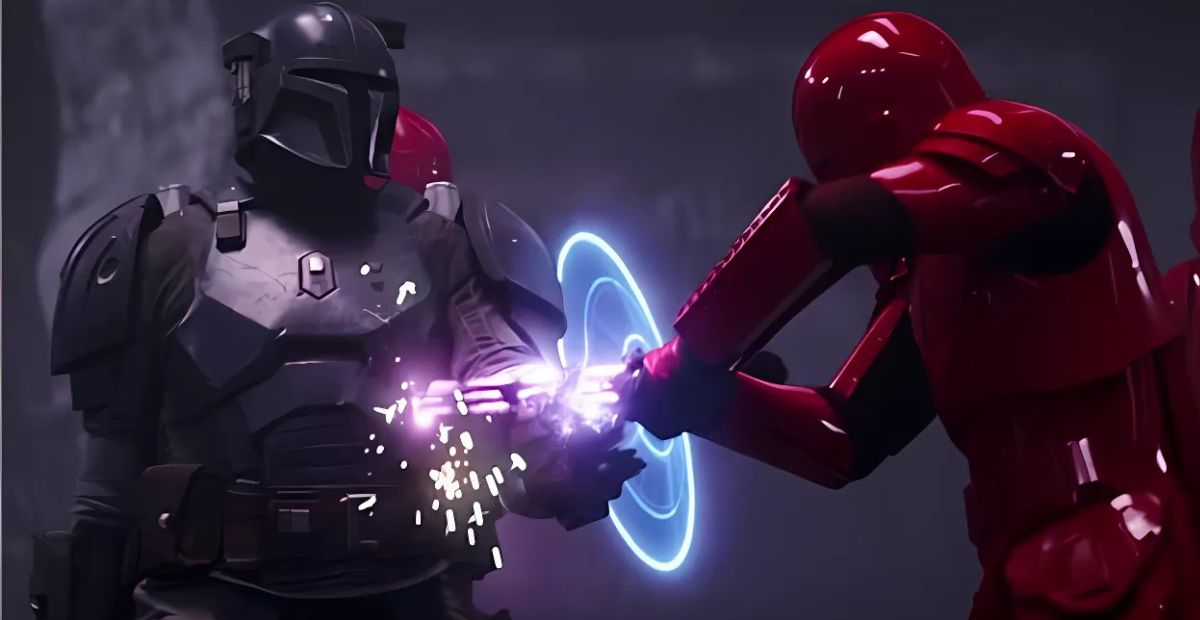If you’re anything like me, you’ve probably watched scenes in The Mandalorian or other Star Wars shows and thought, “Wait, how did that Mandalorian just go down so easily? Aren’t they supposed to be wearing near-invincible beskar armor?”
It’s a valid question, especially since beskar has this legendary reputation in the Star Wars universe for being practically impenetrable.
I mean, it’s literally lightsaber-resistant! So, what gives?
Well, as it turns out, there are a few reasons why some Mandalorians seem to get taken down with just one well-placed shot.
Let’s dive into it and break it down together.
Vulnerable Areas of the Armor
First off, just because Mandalorians are covered in beskar doesn’t mean they’re completely invulnerable.
Take a closer look at their armor. It’s not a full-body suit like Iron Man—there are still gaps, especially around the joints, neck, and lower torso.
These areas aren’t always protected by solid beskar, which leaves them vulnerable to blaster shots or even physical attacks.
You might remember in The Mandalorian, Din Djarin takes plenty of hits to his chest plate, but whenever a blow lands near the gaps in his armor, he’s in serious trouble.
The beskar is strong, but it only protects where it’s covering. If someone gets a lucky shot at the right spot, the Mandalorian is going down.
Think of it like medieval knights—armor was great, but if a sword slipped through the joints? Game over.
A clear example of this is when Paz Vizsla sacrifices himself to save the Mandalorians. While fighting stormtroopers, his armor does help him survive multiple shots, but he gets hit in the leg—an area not fully covered by beskar.
Later, when he faces the Elite Praetorian Guards, they use their electro-bisento to stab him through the joints in his armor, exploiting the gaps and bringing him down.
Beskar Armor Isn’t Always the Same
Here’s something else that might explain why some Mandalorians, particularly in The Clone Wars, seem to fall quicker than others: the quality of their beskar.
While true beskar is incredibly durable, not all Mandalorian armor is made from pure beskar.
Some Mandalorians could be wearing cheaper, mixed-material armor, which wouldn’t offer the same level of protection.
This could explain why some Mandalorians go down more easily—it’s possible their armor isn’t the high-grade stuff we associate with legends like Boba Fett or Din Djarin.
When we first meet Din Djarin in The Mandalorian, his armor is a patchwork of different materials. It’s not the shiny, indestructible beskar set he later acquires.
If his original armor was already as durable as his beskar upgrade, why would he even bother upgrading it?
The answer is obvious—the upgrade wasn’t just for looks. His initial armor was standard for most Mandalorians, likely made from a mix of beskar and other metals.
But over the course of the series, Din gradually upgrades his armor piece by piece. After completing a successful bounty for the Empire, he’s rewarded with pure beskar bars.
These aren’t just any metal—beskar is one of the most precious materials in the galaxy.
It’s rare, highly coveted, and its acquisition marks a huge turning point for Din, allowing him to craft a full set of top-tier armor.

